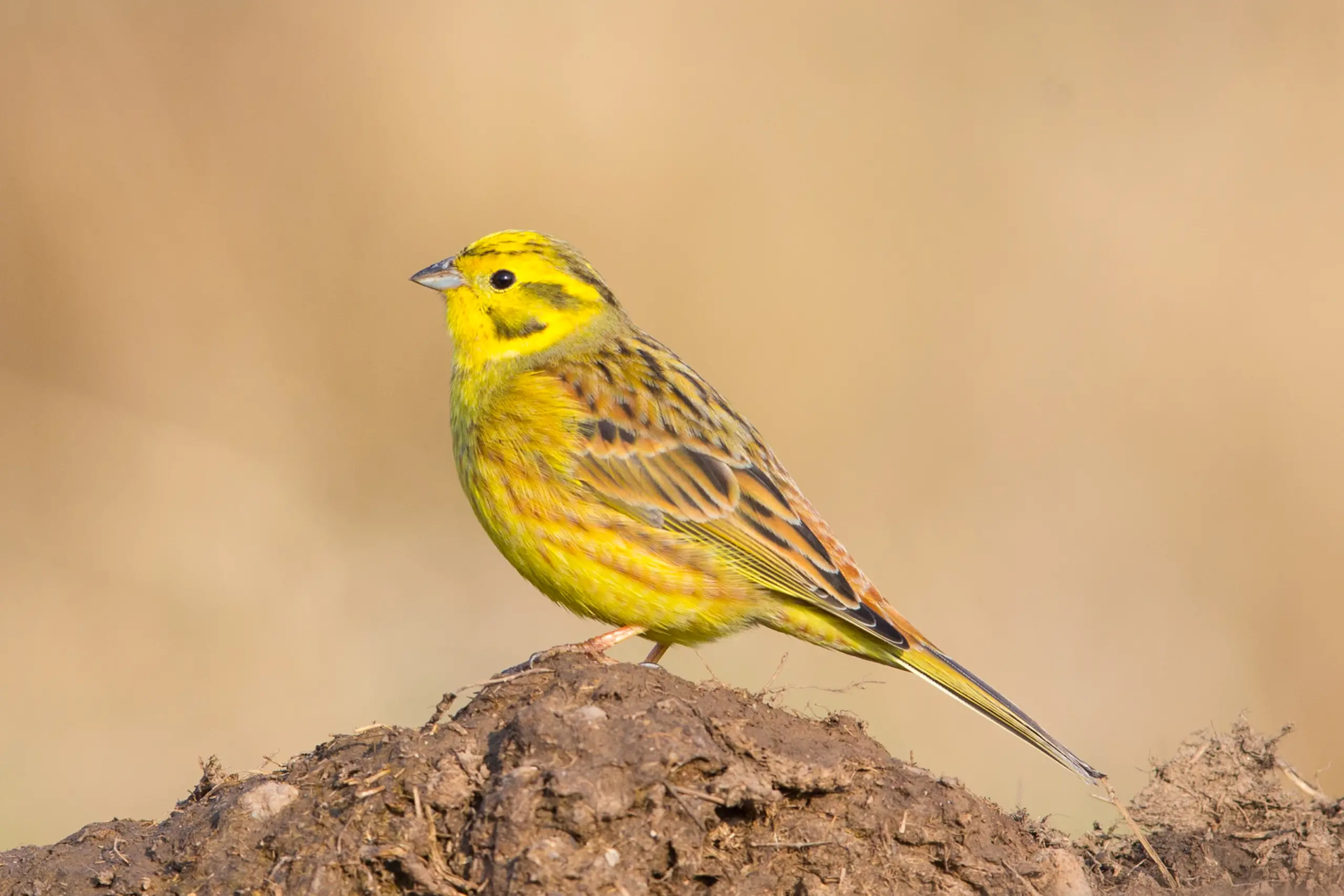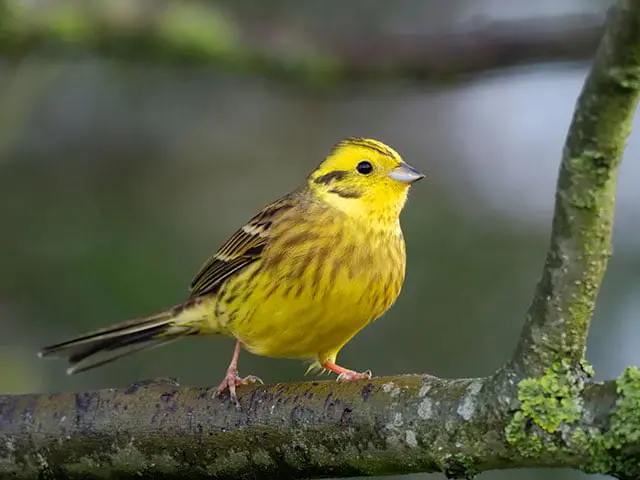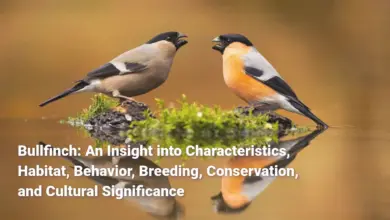Yellow Hammer: An In-Depth Look at Habitat, Characteristics, Behavior, and Conservation
The yellow hammer, scientifically known as Emberiza citrinella, is a bird known not only for its bright yellow plumage but also for its melodious song reminiscent of a cheerful serenade in the countryside. Reminiscent of sunlight breaking through an overcast sky, the yellow hammer embodies the splendor of nature and agriculture. Found mainly in Europe and parts of Asia, this charming avian species has captured the hearts of many nature enthusiasts while playing an important role in its ecosystem.
It thrives in mixed farming landscapes and various habitats, which are critical to its survival. Understanding the yellow hammer’s behavior, diet, physical characteristics, and conservation status sheds light on not only its individuality but also the broader ecological challenges that many species face today.

The yellow hammer is more than just a vibrant bird; it serves as an indicator of the health of its natural environment. Its presence in various habitats signifies biodiversity and ecological balance, making it essential for conservation efforts. Unfortunately, habitat degradation due to human activities, such as urbanization and industrial agriculture, poses a critical threat to its existence. Therefore, delving into the lifestyle and habits of the yellow hammer is pertinent for conservationists and the general public alike. This article aims to provide a comprehensive overview of the yellow hammer, shedding light on its natural habitat, distribution, behavior, and cultural significance.
Habitat and Distribution
The yellow hammer is most commonly found in varied habitats, but its preference largely gravitates toward open farmlands, meadows, and grassy areas mixed with shrubs and trees. These environments provide not just shelter but abundant food resources vital for the survival of the species. As there’s a saying that “home is where the heart is,” the yellow hammer has found its heart in landscapes rich with agricultural activity and natural beauty.
Natural Habitats
The natural habitats of the yellow hammer are as diverse as the species itself. Typically, it flourishes in:
- Managed Hedgerows: These areas provide optimal nesting sites and protection from predators. The yellow hammer builds its nests using grass and leaves, often well concealed among dense vegetation. The green canopies above serve as both a protective umbrella and a sunlight-dappled haven, where these birds can thrive.
- Open Farmlands and Meadows: Such landscapes are desirable not only for nesting but also for foraging opportunities. The yellow hammer enjoys foraging for seeds and insects in these open terrains, akin to a child playing in a field full of possibilities.
- Winter Habitats: When seasons shift, so do the needs of the yellow hammer. Winter finds the species seeking out stubbles left behind by harvests, game covers, and farmyards, where it can find leftover grains. This adaptability is similar to how humans adjust their routines based on the changing seasons.
The combination of these habitats creates a nurturing environment, but they are sensitive to changes in land usage. Agricultural practices that favor monoculture can severely affect the availability of food and nesting sites, resulting in diminished populations over time. Conservation strategies that focus on maintaining diverse habitats are thus essential for protecting this species and similar avian wonders.
Geographic Range
Geographically, the yellow hammer has a robust distribution across Europe and parts of Asia, with its range extending to some regions of the United States. It thrives in low-lying areas and can be spotted from northern Scotland to southern Cornwall and even in Ireland. The Midwest and Northeastern states in the U.S. have also become homes for these birds, as they take well to open farmlands and prairies.
While the yellow hammer is widespread during the breeding season, eastern populations engage in partial migratory behavior, moving south for the winter months. This migratory instinct ensures that the species is not merely a static entity in its environment but a dynamic participant in the ebb and flow of seasonal change.
This broad geographical span highlights the yellow hammer’s adaptability but also serves as a reminder that its habitats must be protected against the pressures of urbanization and agricultural intensification. The fragility of its ecosystems underscores the importance of ongoing conservation efforts and proactive management strategies to maintain viable populations well into the future.
Physical Characteristics
The yellow hammer showcases a remarkable combination of distinct physical traits that make it recognizable and charming. Males are typically more vibrant than females, showcasing the contrast between the sexes – a concept similar to the “dancing flame” of a candle versus the steadfast glow of the wall in a room.
- Size and Weight: The yellow hammer is a medium-sized bird, measuring approximately 16 to 20 centimeters in length, with a wingspan of about 29 to 30 centimeters. Weighing between 25 to 36 grams, this bird holds its own in terms of its physical presence.
- Distinctive Features: Males display a striking yellow head and underparts, combined with brownish-gray upperparts, a rufous rump, and distinctive black facial markings. This vivid coloration not only plays a role in mate attraction but also assists in camouflage, providing dual functionality.
In contrast, females typically reflect more muted colors, sporting brownish-gray plumage with a slight yellow wash across their faces. This adaptation not only enhances their camouflage among vegetation but allows them to blend into their surroundings while incubating their young or foraging for food.
Whether colorful or drab, the yellow hammer’s physical characteristics contribute to its survival by ensuring that it is both visually appealing for reproduction and camouflaged for protection. The unique blend of plumage and size reflects the diminishing boundaries between beauty and necessity in the natural world.
Size and Weight
- Length: Yellowhammers reach a length of about 16 to 16.5 centimeters (approximately 6.3 to 6.5 inches).
- Wingspan: Their wingspan spans from 23 to 29.5 centimeters (approximately 9.1 to 11.6 inches).
- Weight: On average, a yellow hammer weighs between 25 to 36 grams (approximately 0.9 to 1.3 ounces).
Plumage and Coloration
The male yellow hammer, adorned in vibrant yellow and contrasting browns and blacks, embodies the joy of spring. Its plumage serves not only as a means of mate attraction during the breeding season but also displays the intricate artwork of nature crafted through evolution over millennia.
- Males: Brightly colored heads and underparts with streaked backs create an attractive figure.
- Females: These birds exhibit more subdued colors, which provide excellent camouflage during nesting seasons.
The difference between male and female yellowhammers illustrates the broader theme of interconnectedness in nature, where the beauty of coloration serves functional, ecological purposes, ensuring survival while also reflecting the vibrant tapestry of life.
Behavior and Diet
Yellowhammers are remarkable in their social behavior and dietary habits, showcasing a fascinating interplay between their instincts and their environments. Described often as sociable characters, they thrive in communal settings, reflecting the essence of relationships that are crucial not just in nature but in the human experience as well.
Feeding Habits
The yellow hammer’s diet primarily consists of seeds, which is a reflection of its granivorous nature. The adaptability of their feeding habits allows them to thrive in a variety of environments. During the autumn and winter seasons, they predominantly consume grains from cereal crops, seeking out areas where leftover food from harvests can be found.
- Spring and Summer Diet: In contrast, during the breeding season, their diet shifts to include a higher proportion of invertebrates. This dietary shift is critical for their young, as protein-rich foods like grasshoppers, caterpillars, and spiders enrich their growth and development.
Yellowhammers exhibit ground foraging behaviors, often seen scratching and pecking among grasses or stubble fields. This behavior is akin to a child exploring a treasure trove, where each seed or insect found brings joy and sustenance.
Mating and Nesting Behavior
Mating rituals in yellow hammers are rich with song and display. Males establish their territories by singing, often echoing a melody reminiscent of laughter floating through the winds of spring. The diverse calls they use create an enchanting soundscape across their habitats, serving dual purposes of attracting mates and asserting dominance over competitors.
The nesting behavior of the yellow hammer involves the construction of cup-shaped nests typically built on or close to the ground. Females meticulously gather materials like grass and leaves, weaving them together into a secure haven for their eggs and fledglings. This dedication and commitment exemplify the nurturing instincts, essential to the survival of their young.
In these interactions, one can draw parallels to human relationships and familial bonds where dedication, care, and teamwork play vital roles whether in bird communities or our own homes.
Conservation Status
The yellow hammer holds a moderate conservation status, reflecting both its adaptability and the threats it faces in a continuously changing environment. While it thrives in diverse habitats, factors such as habitat loss driven by urbanization and agricultural intensification pose significant risks to its population.
- Threats to Populations: Habitat disruption, pesticide use in agriculture, and challenges posed by invasive species are the main threats affecting yellowhammer populations. Recent studies highlight that their reliance on mixed farming landscapes makes them sensitive to changes in land use and management practices.
Conservation efforts are vital to preserving the delicate balance these birds need for survival. By promoting habitat restoration through various agricultural practices, we contribute not only to the well-being of the yellow hammer but also to the broader health of ecosystems that surround us. The protection of this beloved bird can serve as a unifying objective and inspires push for biodiversity preservation that benefits all living organisms.
Threats to Populations
- Habitat Loss: Urbanization and deforestation severely limit the nesting and foraging areas available for yellow hammers.
- Pesticide Use: The agricultural sector’s reliance on chemicals significantly impacts the food sources available for these birds.
- Invasive Species: The disruption caused by non-native species compromises the local ecosystems, thereby affecting the natural habitats crucial for the yellow hammer.
To combat these challenges, conservation initiatives focus on enhancing habitat quality through sustainable agricultural practices and policies that protect wetlands and grasslands. This emphasizes the interconnectedness of species and highlights the need to view conservation as not merely protecting individual species but as securing life-supporting systems.
Conservation Efforts
In light of these challenges, conservationists have developed various strategies to ensure the survival of the yellow hammer. Conservation initiatives focus on habitat restoration and management practices under agri-environment schemes (AESs). These efforts help improve local ecosystems and offer long-term support for the populations of yellow hammers.

Through projects aimed at establishing grass margins, enhanced field borders, and wildflower-rich habitats, conservationists are laying the groundwork for a more sustainable coexistence between agriculture and wildlife. Such initiatives have shown tangible benefits in increasing breeding success rates and boosting chick survival.
Research points out that implementing practices that promote biodiversity, such as intercropping and designing fields that cater to the nesting and feeding needs of local wildlife, are beneficial. These methods can create healthier ecosystems that benefit not only the yellow hammer but also numerous other species dependent on similar habitats.
Cultural Significance
The yellow hammer’s vibrant presence extends beyond its ecological role; it is imbued with cultural significance as well. Stories, folklore, and even songs have been inspired by this delightful bird, capturing its essence while imbuing it with meaning.
Symbolism in Literature
In literature, the yellow hammer often emerges as a symbol of renewal, hope, and joy. The vibrant yellow plumage and spirited songs resonate with themes of spring and new beginnings. Writers have leveraged the bird as a metaphorical device to explore profound life themes encompassing resilience, vitality, and beauty.
It can be likened to the way a flower blooms after a long winter, providing optimism that life eventually flourishes, regardless of adversities. This is captured poignantly in poems and narratives that embrace nature’s role in fostering human emotions and experiences, often elevating the yellow hammer as a symbol of connection between the earth and the spirit.
Presence in Folklore and Traditions
- Symbol of Good Luck: Various cultures consider the yellow hammer a symbol of good fortune, with sightings leading to tales of prosperity.
- Folklore References: Literary works celebrating the yellow hammer have emerged, with poets like John Clare illustrating the bird’s beauty and its emblematic role in rural life.
- Cultural Heritage: In certain UK regions, the yellow hammer symbolizes the agricultural landscape, linking its presence to local history and practices.
- Connection to Nature: As a vital part of the ecosystem, the yellow hammer conveys the interconnectedness of life, reminding its observers of their bond to nature.
Such meanings enrich the cultural landscape, underscoring how nature influences human perspectives. The yellow hammer transcends its status as a mere bird; it becomes a beacon of cultural memory and narrative, drawing connections between past and present experiences, renewing the call to cherish our natural heritage.
Related Species
Exploring the yellow hammer also opens a window to its relatives within the Emberizidae family, illustrating both similarities and differences among species that share common traits yet display distinct variations in behavior, habitat, and physical features.
Similar Birds in the Family
- Pine Bunting (Emberiza leucocephala):
- Description: Shares a similar size but features a white head and more muted tones.
- Habitat: Prefers the coniferous forests and surfaces mostly in Siberia.
- Rock Bunting (Emberiza cia):
- Description: Has a robust build and a grayish-brown head.
- Habitat: Found in rocky hillsides and shrublands of southern Europe and Asia.
- Corn Bunting (Miliaria calandra):
- Description: Stockier than the yellow hammer, featuring streaks across its breast.
- Habitat: Thrives in farmland throughout Europe.
Differences with Closest Relatives
While each species shares feeding and reproductive strategies typical of the Emberizidae family, key differences set them apart:
- Coloration & Markings: Males of the yellow hammer are distinguishable with bright yellow underparts, whereas its relatives display different hues, e.g., the Pine Bunting’s white head and the muted tones of the Corn Bunting.
- Vocalizations: The unique song of the yellow hammer, often likened to a cheerful phrase, contrasts sharply with the more varied calls of relatives such as the Rock Bunting.
- Nesting Habits: Yellowhammers nest on or near the ground, while their relatives prefer different nesting strategies based on their unique habitats.
These comparisons illuminate the evolutionary paths each bird has taken, adapting to specific environmental niches while maintaining a presence reminded throughout the Emberizidae family. By recognizing these differences and similarities, one appreciates the complexity of ecosystems and the myriad life forms that inhabit our world, working harmoniously to create the tapestry of life.
In conclusion, the yellow hammer serves as more than just a charming bird; it represents a vital ecological entity entwined in the fabric of rural landscapes, brings joy and inspiration to human culture, and highlights the need for stewardship and conservation. Through comprehensive understanding and proactive efforts, we can protect not only the yellow hammer but also the precious environments that sustain its existence. By fostering awareness and reinforcing our ties to nature, we can ensure that future generations continue to experience the vibrant, melodic beauty of this remarkable species.









